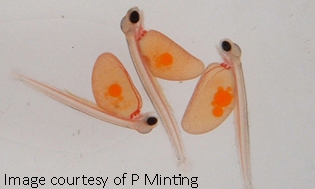 The Spey Fishery Board has initiated a fundamental review of its salmon stocking policy and practice in light of the results from a major genetic analysis project. They indicate that fish from the river’s hatchery programmes make a very minimal contribution to rod catches.
The Spey Fishery Board has initiated a fundamental review of its salmon stocking policy and practice in light of the results from a major genetic analysis project. They indicate that fish from the river’s hatchery programmes make a very minimal contribution to rod catches.
Roger Knight, Director of the Spey Fishery Board, said: “Most people are familiar with DNA analysis and how it can be used to confirm parenthood or identify criminals. This technology is now being employed in fishery management in Scotland under the FASMOP (Focusing Atlantic Salmon Management on Populations) Project, which aims to identify the distinctive breeding populations of salmon – not just to differentiate between fish from one river and those from another – but the different breeding populations that make up a river’s stock, so that our management of the fisheries is better informed. It has also been used by the Spey Fishery Board to assess its stocking programme, to see whether it is benefiting the Board’s aims of protecting and enhancing the wild fish populations”.
Mr Knight continued: “With finclips taken from all of the Spey’s broodstock used over several years, together with meticulous breeding records of which males were paired with which females and finclips from a large number of rod-caught adults, it has been possible to use genetic information from all of these fish to determine what proportion of the rod-catch has emanated from our hatcheries. Parent testing for rod-caught salmon, so to speak!”
Mr Knight added: “Over 550 rod-caught fish samples were collected for analysis during 2008 and 2009, enabling us to see if their parents had been part of our broodstock during 2004 and 2005. This was where the meticulous records compiled by the Spey Board’s hatchery and research staff came to the fore, allowing the geneticists to match fish with absolute confidence. From the 558 rod-caught samples analysed, three of them had originated from the Spey’s hatcheries, giving a return rate to the rod fishery of 0.5 per cent. To put this into perspective, of the 8,626 fish caught during 2009, the hatcheries would have provided about 40 fish”.
The Spey’s hatchery operations cost the Board up to £120,000 per year. Tulchan Estate also operates a hatchery under the Board’s supervision, but at the Estate’s expense. Since the genetic analysis results were presented, the Spey Foundation and Spey Board have started a thorough review of their stocking policy and practice. This review is ongoing and it is intended that, as far as possible, it should involve all interested stakeholders. The Board are keen to ensure that any decision taken is properly communicated and widely supported.
Mr Knight concluded: “The Spey Foundation Committee and Spey Board will meet again in August, at which point the numbers to be stocked in 2012 will be decided. It was recognised that this would be premature for any long-term decision on the future of our hatcheries. However, our stocking strategy for next year will be far more targeted than hitherto, and its scope will be determined once we have the results of juvenile electro-fishing surveys later this year. A decision on a longer-term approach will be taken in due course”.
